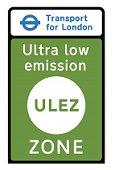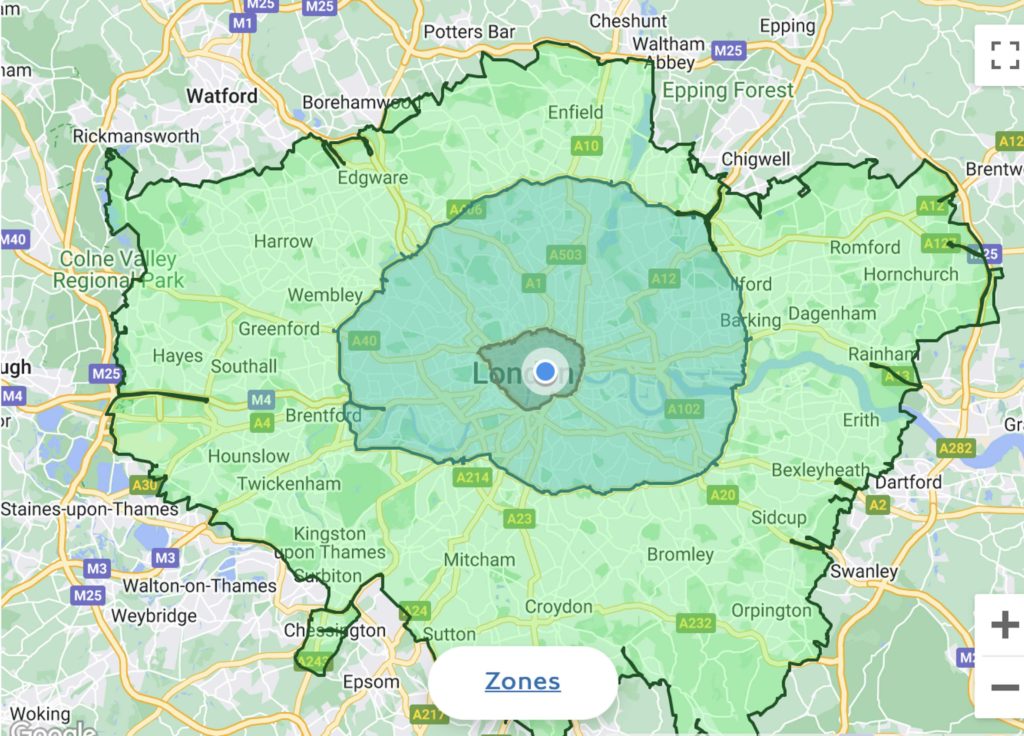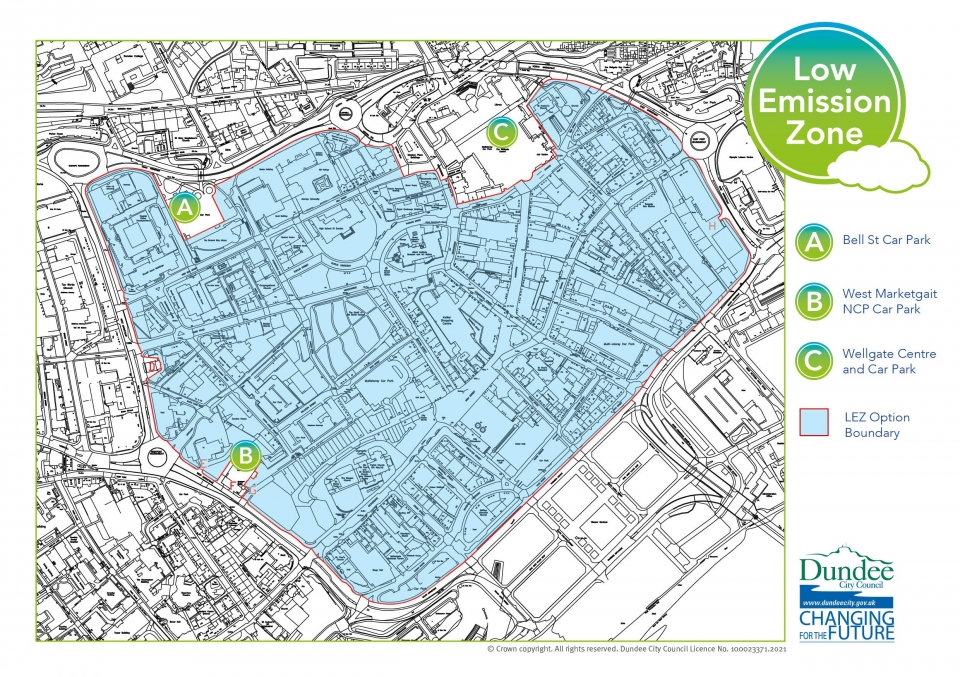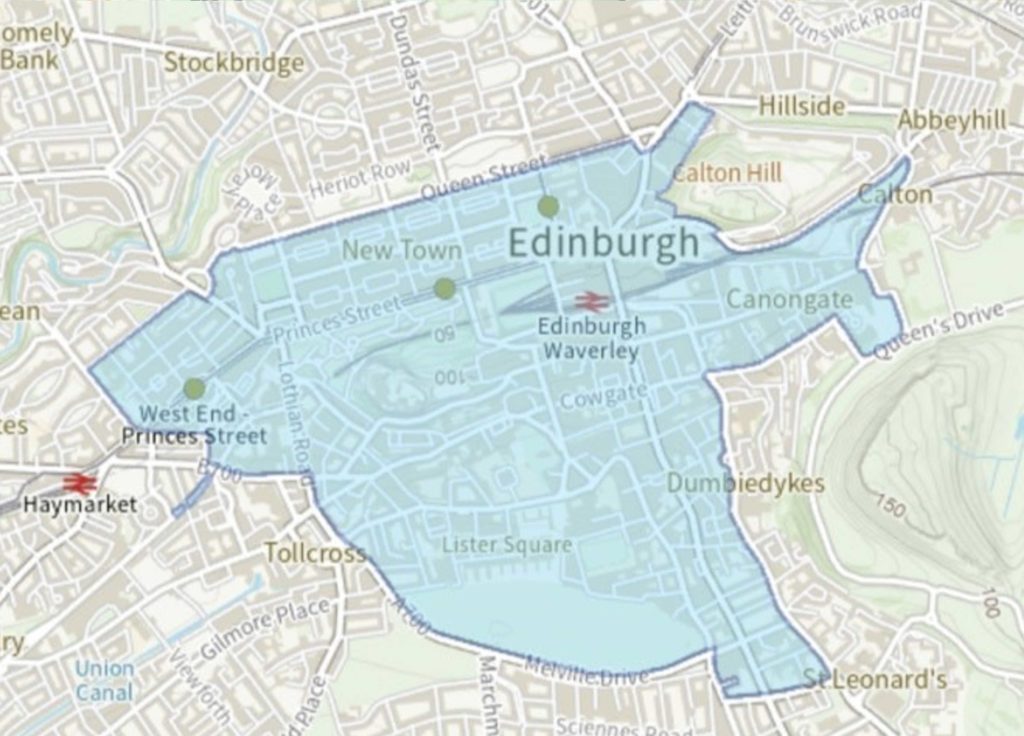What are clean air zones (CAZ), low emission zones (LEZ) and ultra-low emission zones (ULEZ)?
Clean air zones (CAZ), low emission zones (LEZ) and ultra low emission zones (ULEZ) are areas in the UK where city councils charge a fee for the most polluting vehicles to drive in. They have been created in an effort to significantly reduce air pollution created by diesel and petrol cars, which has become a particular problem in large cities with ever-increasing populations and more vehicles.
CAZ is the term used in England, with the exception of London, where the city has both LEZ and ULEZ, as well as a congestion charge. LEZ is the term used in Scotland.
These zones form part of a broader government-led approach to reducing emissions to help achieve the UK’s net-zero target, with a steady expansion of various zones over the last few years.
Air pollution presents a higher health risk to certain groups, such as older people, children and people with lung conditions or other breathing problems. The impact can’t be underestimated: now that the ULEZ in London has been expanded to cover outer London, it’s estimated that around five million people will no longer breathe unsafe and toxic air that exceeds interim World Health Organization guidelines, including an estimated 87,000 children.
In this blog, we’ll examine the London ULEZ and congestion charges in detail, which encompass an estimated 8 million people, as well as reviewing CAZ and LEZ across the UK.
London’s charges in detail
London currently operates three charges: the ultra low emission zone (ULEZ), low emission zone (LEZ) and the congestion charge. We’ll focus on the ULEZ and congestion charge in this blog, as the LEZ applies to heavy polluting diesel vehicles such as lorries.
What does London’s ULEZ cover?
All London boroughs have adopted the ULEZ charge since 29th August 2023. This means that if you drive a pre-Euro 4 petrol car or your car has a pre-Euro 6 diesel engine, you’ll be liable for the daily charge. Numerous ANPR (automatic number plate recognition) cameras around the city capture footage of vehicles to enforce the ULEZ charge in areas clearly signposted with a ULEZ sign, such as the one below.
How much is the ULEZ fee?
Drivers are charged £12.50 per day to drive within the ULEZ if their vehicles do not meet the required emissions standards.

Are there any exemptions to the charge?
There are a number of ‘grace periods’ available for disabled drivers, as well as some specific classes of vehicles. You can find out more about exemptions here.
Is my car compliant with the ULEZ zone in London?
The London ULEZ is designed to target older petrol and diesel cars on the road that emit more harmful exhaust gases and which don’t meet the new emissions standard. All combustion-engine vehicles, both old and new, are graded for their environmental impact by a ‘Euro’ system. 9 out of 10 cars in London are already compliant with the new ULEZ launched in August 2023.
You can check your vehicle here, using Transport for London’s website.
Where is the Ultra Low Emission Zone in London?
The zone currently covers all areas within the North and South Circular Roads. The North Circular (A406) and South Circular (A205) roads are not currently in the zone.
ULEZ operates around the clock, with Christmas Day (25 December) being the only exception when the charge doesn’t apply.
If your vehicle doesn’t meet ULEZ emission standards and isn’t exempt, you’ll need to pay a £12.50 daily charge to drive inside the zone, regardless of your purpose or how long you plan to drive within the ULEZ. This applies to cars, motorcycles, vans and specialist vehicles (up to and including 3.5 tonnes) and minibuses (up to and including 5 tonnes).

How do I pay for the ULEZ charges in London?
You can pay for ULEZ charges through the Transport for London site. You’re able to pay for previous charges you’ve incurred plus future charges you know you’re likely to incur, up to a period of 90 days ahead. You can also set up monthly automatic payments, if you’d prefer.
What is the London congestion charge?
Separate from the ULEZ charge is the congestion charge. This covers a zone right in the city centre of London and aims to reduce the amount of vehicles on the road, as well as reducing pollution.

The congestion charge operates from 7:00-18:00 on Monday-Friday and from 12:00-18:00 on Saturday-Sunday and bank holidays, at a cost of £15 per day. There’s no charge between Christmas Day and New Year’s Day bank holiday (inclusive).
It used to be that EVs were exempt from the London congestion charge, but from 24 December 2025 all EVs will have to pay it.
Where does the money go from London ULEZ and congestion charges?
Money raised from the ULEZ and congestion charge in London is ring-fenced, meaning it can only be used to pay for improvements to public transport in London. The ULEZ alone is expected to generate more than £200 million in 2024/2025.
What are the rules for other clean air zones in UK cities?
Many UK cities are currently either implementing or considering implementing clean air zones or low emission zones. We’ve summarised them below, but considering government targets to reduce emissions across the country, there’ll no doubt soon be more new zones plus the expansion of current ones.
Where are the low emission zones (LEZ) in Scotland?
Scotland introduced LEZ across Aberdeen, Dundee, Edinburgh and Glasgow in 2022, with a two-year grace period before enforcement began. You can check your vehicle using this Scottish government website.
Where are the Low Emission Zones (LEZ) in Scotland?
Aberdeen ULEZ
The low emission zone in Aberdeen covers an area centred on Union Street and stretching as far as Willowbank Road and past King Street. The train station and bus station both fall outside the LEZ in Aberdeen.
Fines have been applicable since 1st June 2024 for non-compliant vehicles that enter the Aberdeen LEZ, with charges operating similar to a parking fine; initially costing £60, but reduced to £30 if paid promptly.
Dundee ULEZ
Dundee’s low emission zone is around the city centre, not including the Wellgate Centre Car Park or the Bell Street Car Park. The fines for the Dundee LEZ also began on 1st June 2024.

Edinburgh ULEZ
Edinburgh’s low-emission zone covers the centre of the city. It stretches from Queen Street, covering the West End, and includes an area out to St Leonards, incorporating most of the roads around the Meadows. Similarly, fines began on 1st June 2024.

Glasgow ULEZ
Glasgow’s low emission zone is bordered by the M8 and the Clyde and stretches east almost as far as Glasgow Green.
Glasgow accelerated the system of fines for non-residents with charges kicking off in 2023. Local residents had a further year to comply and had a grace period until 1st June 2024 to change their vehicle to a compliant model.

England’s clean air zones
In England, there are four types of clean air zones (CAZ), classed from A to D.
A: Buses, coaches, taxis, private hire vehicles
B: Buses, coaches, taxis, private hire vehicles, heavy goods vehicles
C: Buses, coaches, taxis, private hire vehicles, heavy goods vehicles, vans, minibuses
D: Buses, coaches, taxis, private hire vehicles, heavy goods vehicles, vans, minibuses, cars, plus the local authority has the option to include motorcycles
At the moment, there are seven English cities that have CAZ – we’ve listed them below, with the class that has to be paid for. Greater Manchester is currently reviewing its CAZ. These CAZ operate 365 days a year, 24 hours a day, with no exceptions.
Clean Air Zones with charges
| City | Charge | Operating/Planned Hours | Exemptions | Class |
| Bristol | £9.00 Pay | Now | List | D |
| Birmingham | £8.00 Pay | Now | List | D |
Clean Air Zones with no charges
| City | Charge | Operating/Planned Hours | Exemptions | Class |
| Portsmouth | No Charge | Now | List | B |
| Bath | No Charge | Now | List | C |
| Bradford | No Charge | Now | List | C |
| Sheffield | No Charge | Now | List | C |
| Greater Manchester | No Charge | Under review | List | D |
| Tyneside – Newcastle and Gateshead | No Charge | Now | List | C |
Bath C
Birmingham D
Bradford C
Bristol D
Portsmouth B
Sheffield C
Tyneside (Newcastle and Gateshead) C
In order to drive in the CAZ in these cities, your vehicle must meet a minimum standard.
Buses, coaches, heavy goods: Euro VI
Vans, minibuses, taxis, private hire vehicles, cars: Euro 6 (diesel) and Euro 4 (petrol)
Motorcycles: Euro 3
You can use this government online service to check whether your vehicle is compliant, as well as paying for any charges. You can pay up to six days in advance or six days after driving in a CAZ.
As with the London ULEZ, there are exemptions including disabled passenger tax class vehicles and historic vehicles – you’ll find a full list here.
Whether you’re already in a CAZ, LEZ or ULEZ, or one is coming to your city in the future, our team of EV experts are here to help you move to electric to help beat any charges. Contact us today to set up an appointment.

